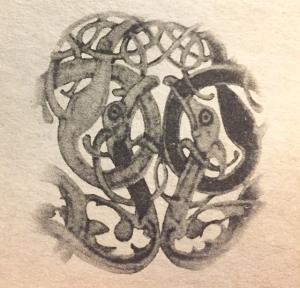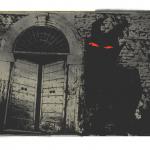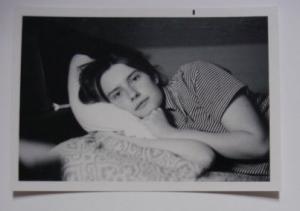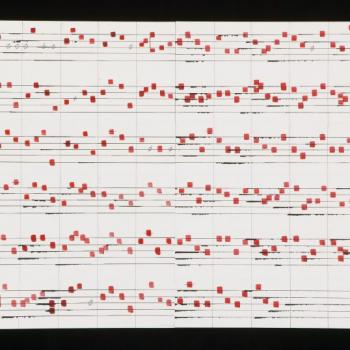When I was a child I developed the curious notion that virtue could be measured by whether or not stray animals gravitated toward a person. This idea came from the books I was reading at the time, mostly James Herriot and Madeleine L’Engle. In Madeleine L’Engle’s novels, stray animals were always appearing at characters’ doors, as a reward for their worthiness and as a comfort in difficult times. James Herriot’s stories were about the adventures of a country vet. It was natural that stray animals should figure prominently, that he should always be finding them in fields and along roadsides. Nonetheless, I was fairly certain that the high incidence of stray animals in his life was related as much to his goodness as to his profession.
Eventually I forgot about this theory – but not completely. I was reminded of it a few years ago, when a tiny dog appeared in our yard in the middle of a storm. It was so windy that she could barely stand, and I felt a thrill as I remembered my childhood dream of finally being a good enough person that animals would be impelled in my direction.
As it turned out, she was not a stray. She belonged to someone a few streets over from us. We spent two days trying to find her owners, and then they appeared at our door, furious that we had kept their dog for a weekend. Even though we had fed her and taken her to the vet, even though she was neither collared nor microchipped, they seemed certain that we had set out to deprive them of their dog. Adolescent theories about virtue notwithstanding, this dog’s owners seemed to be thoroughly unpleasant people.
What this says about animals and virtue, I couldn’t say. No stray animals appeared in my life as a child, but when I was thirteen I spent two weeks watching the neighbor’s cats. Every morning, I fed them and let them outside for the day. Every evening, I let them back in the house for the night. One night, the cats were nowhere to be found. I called and called, but they didn’t appear. At last, there was a rustling in the bushes in the backyard. I set to work calling and coaxing in the gentlest voice I could manage. The bushes began to rustle again, and then out waddled an absolutely enormous opossum. It was hideous. Its teeth were yellow, its hair was sparse, and it was heading straight for me. I shrieked and ran all the way home. I’ve always remembered this event with horror. It has always seemed to me like the time I was nearly eaten by a Rodent of Unusual Size.
My role in these two events seems decidedly strange to me now. I had expected to find a place in the stories of my childhood, yet the recovery of a lost dog led not to comfort and companionability, but to suspicious glares from my neighbors. Moreover, it amazes me, in retrospect, how unusual it is for a wild animal to respond to a person’s voice and actually emerge from its hiding place. Instead of finding my place in a story, my place seems to emerge in the world of nature – a circumstance that seems to me wholly incomprehensible.
In stories, the appearance of an opossum would be an omen. The unexpected presence of a hideous creature with red eyes and yellowed teeth seems to point to something sinister. I had remembered this event as something fearsome and frightening. But the memory of it has begun to change. I can’t help thinking of it as that time I did something marvelous, and I wonder if I will ever do anything like that again.
Maren Grossman lives with her family in central Pennsylvania. She currently homeschools her children, and puts her MA in philosophy to good use by constantly questioning her identity. In this way, she perhaps resembles the opossum, which looks like a rodent but is actually a marsupial. Who can say what an opossum thinks about its own identity? Her work has appeared previously on the Sick Pilgrim blog.
Joanna Penn Cooper curates the “Approaching Mystery” series for Sick Pilgrim, publishing flash essays by writers encountering the unseen, the uncanny, and the unresolvable.













